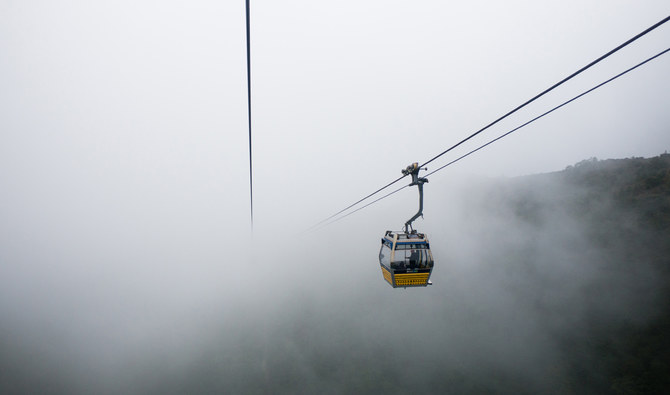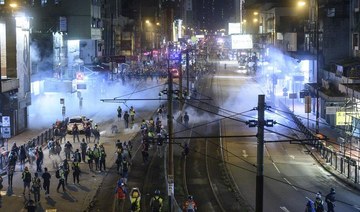HONG KONG: Not long after Tom Yam returned to his native Hong Kong after 40 years abroad, he picked Lantau Island to settle in, drawn to its laid-back villages, wooded trails and scenic beaches a world away from the bustle of the city.
That may be about to change with a plan to build artificial islands off Lantau to ease congestion in Hong Kong, ranked as the world’s least affordable housing market for a ninth year by US research firm Demographia.
The East Lantau Metropolis, to be built on 1,700 hectares (6.6 sq miles) of reclaimed land, will have a central business district and up to 400,000 housing units, with the first of 1.1 million residents expected to move in by 2032.
“They are going to build a city in the middle of the sea at a time when global warming is intensifying, sea levels are rising, and cities are trying to minimize risk,” said Yam, who lives in the small town of Mui Wo on Lantau.
“If we build another Central Hong Kong, local residents will be priced out, local businesses will be killed, and the new area will be just as congested as the most congested areas in Hong Kong. So where is the quality of life improvement?“
Ineffective policy measures, powerful developers and a limited supply of land have led to a huge shortfall of housing in Hong Kong, according to property experts, with an average waiting period of more than five years for public housing.
Hong Kong Chief Executive Carrie Lam, in a speech last year, vowed to ease the shortage by boosting land supply through reclamation and redevelopment, and earmarking 70 percent of housing on the new Lantau islands for public housing.
Opponents, including planners, conservationists and some Christian groups, say the plan — estimated to cost at least HK$500 billion ($64 billion) — is unnecessary, will drain Hong Kong’s financial reserves and will hurt the environment.
“The land to be created in this project far exceeds the population and land demand projections,” said Brian Wong of advocacy group Liber Research Community. “Alternate land supply options could easily replace this project without the environmental problems.”
A spokeswoman from the Civil Engineering and Development Department said that reclamation cost is comparable to the cost of taking over private farming land in Hong Kong.
“The government has taken into account the conservation of the natural environment and ecology, and we will conduct the requisite environmental impact assessments,” she said.
With more than 7.4 million people crammed in a 1,104-square-kilometer (426 sq mile) area, the city is one of the world’s most densely populated places.
The frustration over lack of housing is seen in what began as a protest against a bill that would have allowed people to be sent to mainland China for trial and has evolved into demands for greater democracy.
“The protests are a manifestation of the growing unhappiness with the lack of consensus, lack of transparency, and dissatisfaction with the government’s heavy-handedness,” said Yam. “And this plan to build artificial islands is a part of that.”
Hong Kong has long reclaimed land from the sea, and also has a plan for underground development to free up space.But the city is not short of land, and only needs better land-use planning to meet its needs, according to the Citizens Task Force on Land Resources, a network of urban planners, researchers and land rights activists.
“Low-lying areas such as artificial islands are highly vulnerable to extreme weather and tides and storm surges, and more frequent flooding,” said Paul Zimmerman, chief executive of Designing Hong Kong, an urban think tank.
“They would have irreversible impacts on marine and wetland eco-systems,” he added.
From Mumbai to Manila, several Asian cities have reclaimed land from the sea for offices and apartments. But Dubai’s artificial islands — the World and the Palm projects — have come under fire for damaging the marine habitat and disrupting currents.
The controversy over the plan has brought a range of suggestions from unlikely quarters.
Advocacy group Federation of Public Housing Estates has asked the government to take over an exclusive 172-hectare golf course to create about 30,000 housing units.
A pro-Beijing political party suggested using an ordinance to take land from private owners, including in the New Territories, for housing.
Any of these options would be preferable, said Yam.
“This is a small town; everyone knows everyone, and we have everything we need right here,” he said.
“If we build those artificial islands, this will all be gone in a flash.”





















